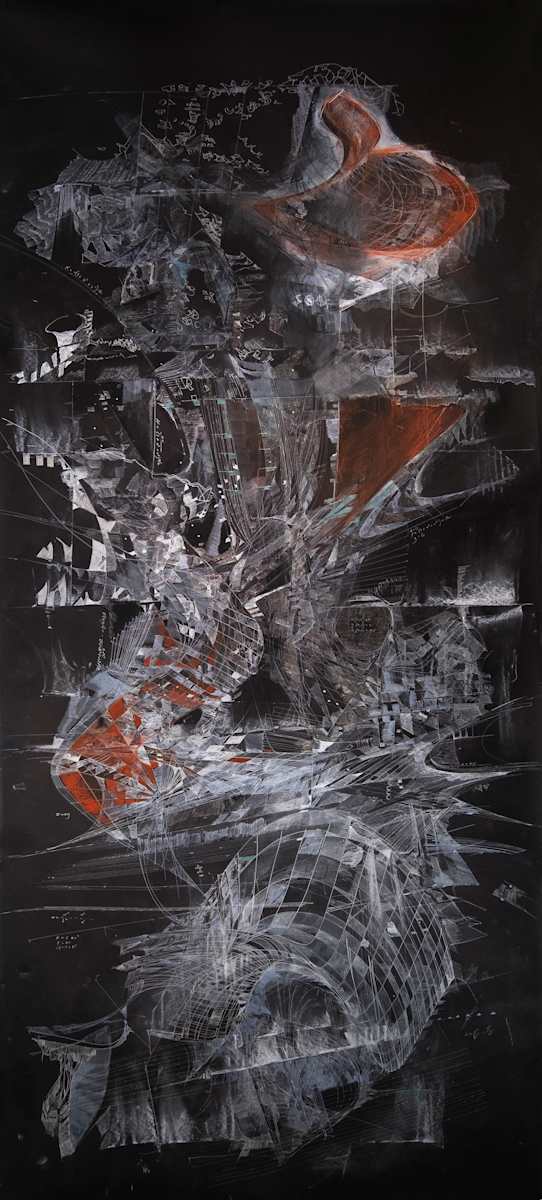
I really love the hyperbolic paraboloid. I first noticed it as a kid, looking at weird saddle shaped roofs on church and doctors offices in California. I didn’t know then what to call it. Later I found out it’s a non-Euclidean geometric family of forms, and this pleases me, this non-classical status, because I sense its unruly secrets. I feel space-age Jetsons vibes, a little bit glam-rock and kitschy, spiriting us away to realms both slightly mordant and optimistic. Culturally the hyperbolic paraboloid is a remnant of an architecture of progressive America in the sixties, and as Rita McBride notices, also has this astonishing charm of looking like or even behaving like a wormhole. She deploys iterations of the cone form of the hyperbolic paraboloid in her recent laser sculpture, Particulates (2017). If ‘wormholes’ are a science fiction fascination with passages through the curve of space-time, a ‘wrinkle in time’ to follow Madeleine L’Engle, the weird effects involved in reproducing parabolas include, precipitation, accumulation, and recursions: I never notice where they end and begin. Linear light-fields involved in simultaneous contraction and expansion are McBride’s order of the day, ironically served with barriers and rainwater on the side. The saddle form of the hyperbolic paraboloid was often used in ‘space age’ architecture in the post war period, especially in the sixties, and I remember being fascinated by the strange sweeps atop cathedrals, such as St Mary of the Assumption (San Francisco, 1970), “ ‘Our Lady of Maytag,’ as its neighbors have christened it, for its vague resemblance to a washing machine agitator”—involves eight hyperbolic paraboloids that suspend from a Greek cross formation at apex to a cruciform footprint on the ground “that hovers over sunken courts for cars.” Meanwhile, if all this were not enough already, the attempt on my part to draw multiple hyperbolic paraboloids on a single giant sheet of cosmos-adjacent black recycled paper, leads to a romp. Without a care in the world, my vertical cascades of line pool and release around the hyperbolic paraboloid renderings, which are made by freehand copy from online diagrams, alongside my crude copies of quadratic equations that describe the hyperbolic parabolic functions, which I culled diligently with the help of Wikipedia. I couldn’t help but notice, in the end, that these cascades add up to a protagonist, a figure in motion, some body moving in interstellar space, maybe through a wormhole. Just someone trying to communicate through equations, she’s my body double and my super star. She’s close to a full merge with Aelita. A science fiction silent from the early Soviet era (1924), Aelita of contemporaneous designs of Oskar Schlemmer at the Bauhaus (Weimar)—with a surrealist attitude of maximum uncanny humor around post-human geometric clothing. It’s evident, from her whole construction, and the drawing’s, that Aelita’s texts have got to be math.
- Collections: Drawings Portfolio 2024
